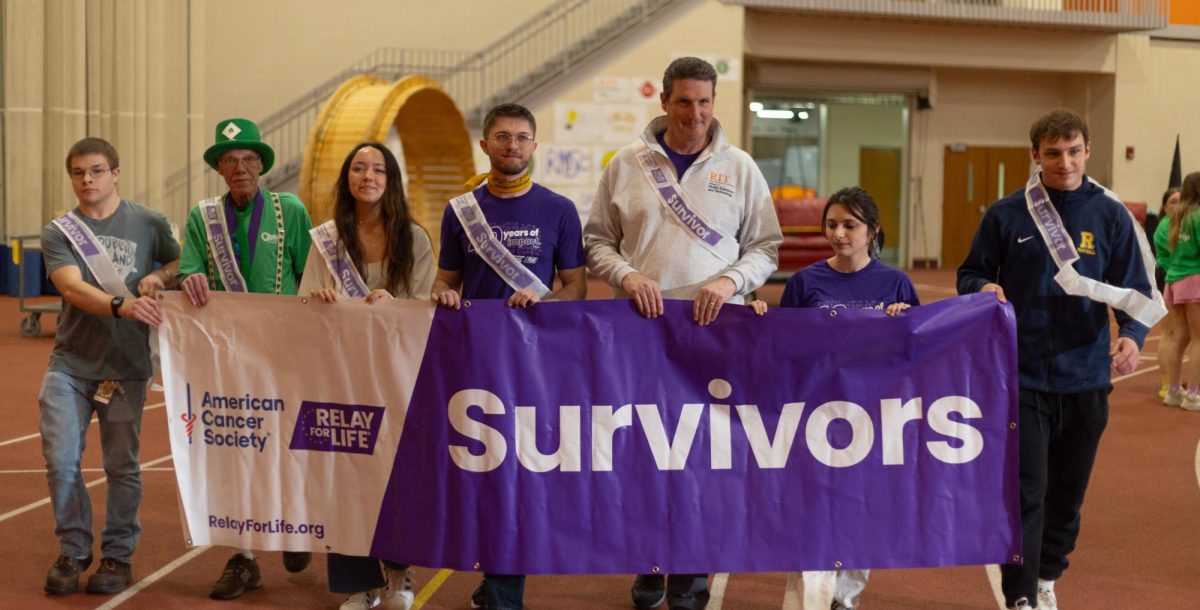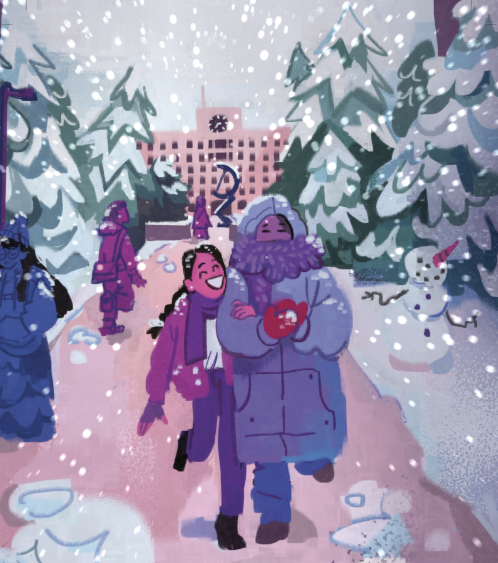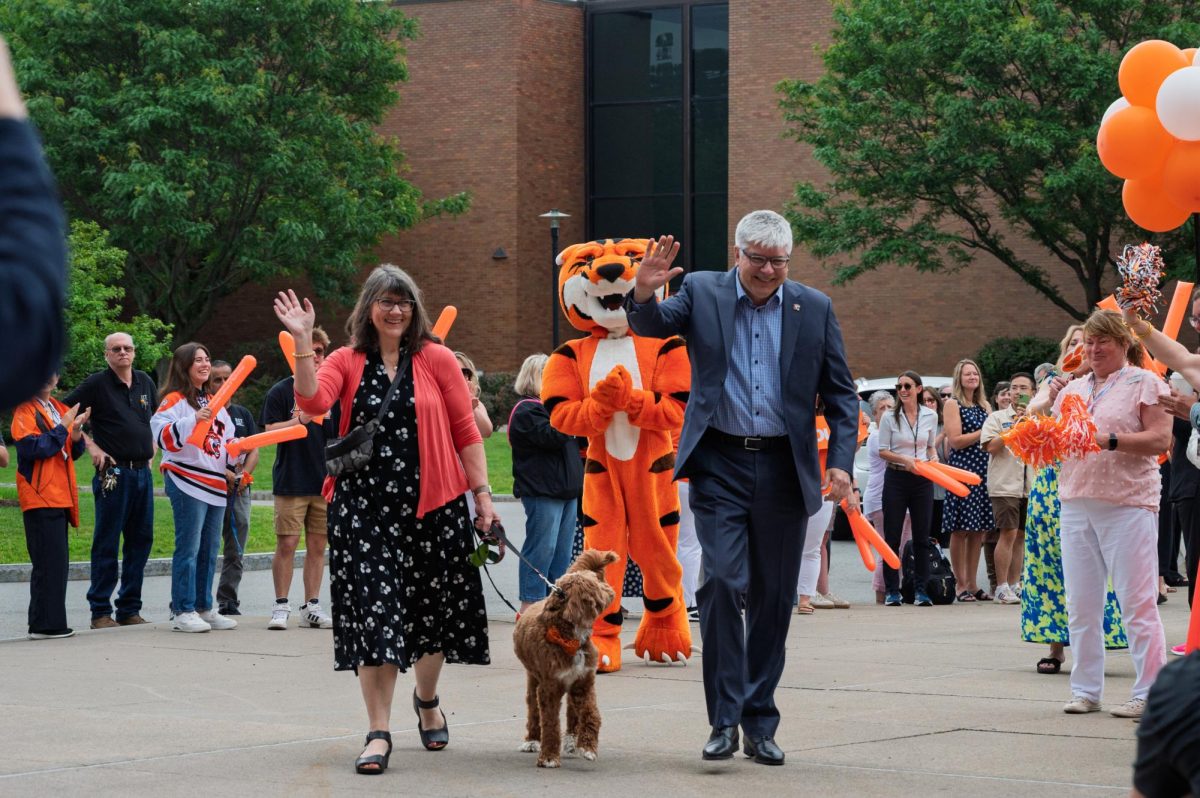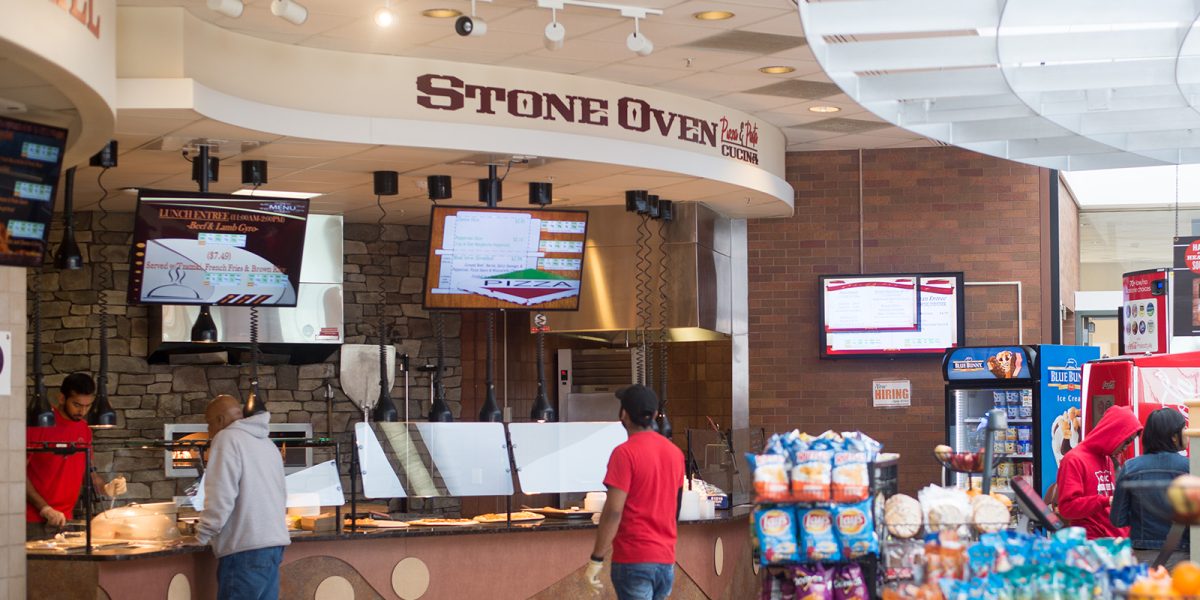From 6 p.m. on April 5 to 6 a.m. on April 6, hundreds of RIT students gathered in the Gordon Field House. They set up tables, blew up air mattresses and brought in coolers of food and cases of energy drinks in preparation for Relay for Life — an all night event raising money for the American Cancer Society.
The event consisted of a series of smaller events such as performances, competitions and ceremonies honoring those who have struggled with cancer in the past or those who have cared for them. Various clubs participated, selling goods or services at tables lining the track for “relay bucks,” from which all proceeds went straight to the fundraiser.
The biggest piece of the event revolved around the track on the floor of the Gordon Field House. Throughout the night, various clubs and groups of students took turns walking around it, creating the relay for which the event has been named. Certain ceremonies invited particular groups of people to walk the track at certain times, such as cancer survivors, caregivers or anyone who had arrived in a superhero costume. Some students merely strolled around the track, while others challenged each other to sprint in races.
A couch on wheels created by Tech Crew offered rides starting at $1. Many other clubs created similar vehicles, including a chair attached to the back of a mini-race-car by Engineering House.
“I love it so much,” said Krysten Guerrero, a 2nd year software engineering major and the campus ambassador for Gift of Life — an organization that helps connect cancer patients with potential bone marrow or stem cell donors. “Even if I’m just tabling the whole time, I love seeing everyone get together and walk around.”
For them and many others, the event brings a sense of community for those whose family members have suffered from cancer. This feeling is especially fostered during the Remember Ceremony, when candles are brought up to light a “HOPE” sign, students are given glow sticks and encouraged to hold them aloft and the names of cancer patients are shown on a screen. Except for background music, this ceremony proceeds in solemn silence.
Afterwards, students take a lap around the track together. The track is lined with luminaria — decorated paper bags sponsored in remembrance of those who have passed. This part of the event holds high emotional charge for many students, especially those who have lost a friend or relative to the disease.
“What we do here matters,” Finn Rhoads — three-year co-president of Relay for Life — stated. “No one should have to lose a parent at 16 or younger, or have a parent go through cancer — because treatment sucks… So sometimes it is hard and I just have to sit back and remind myself that that’s what matters and that’s why I’m doing this.”
Rhoads went on to describe how organizing Relay for Life is an all year round project. Once it finishes each year, the committee immediately begins solidifying dates and plans for the next.
As the committee is made up of student volunteers, many of them also have little experience in planning the events. However, Rhoads referenced this as a positive, stating that each student brings a unique and refreshed perspective to the preparations. “Cancer affects everyone, you know, it’s not just people who are studying to be PAs or nurses, or [who] do research that have an impact. It’s people like me who also help to make that difference, and all of our volunteers who make this event possible.”
At the end of the event, though students are certainly exhausted, they feel a sense of accomplishment as well. There is a sense of pride involved in being a part of something bigger than themselves. New friendships have been made or strengthened, and an impressive amount has been raised — in this year’s case, over $60,000.
Guerrero summarized the sentiments of many other students, explaining, “We’ve stayed up together all night — helping each other out. It’s awesome.”







